1 Introduction
1.1 Purpose
I didn’t care much about the knowledge of STL in the past. Recently, I felt that there were too many places where STL was used in engineering codes at work. I didn’t understand it. , Then I thought that I could write a greedy snake to learn and sell now, and deepen the image.
1.2 Recommendations
It is recommended that students who are unfamiliar with STL can review STL before reading this article.
1.3 Development environment
Language: C++
Environment: Visual Studio 2022, Windows
2. Achievement display
No ink marks, first show the results.

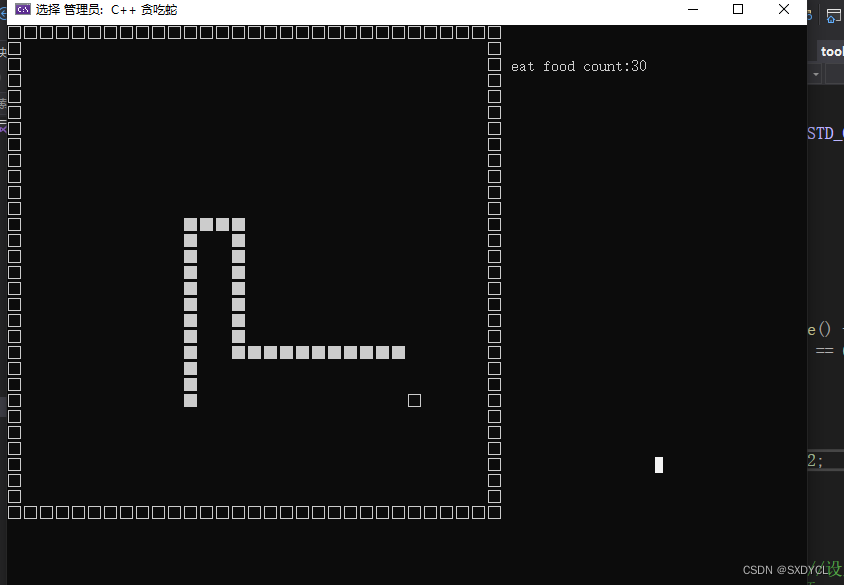
3. Project requirements
1. Initialize the game, generate maps, snakes, and food
2. Snakes grow longer after eating food
3. Snakes cannot move in reverse 4.
Immediately produce new ones after food is eaten
5. Record the number of food eaten (score)
6 .Food cannot be generated on the snake body
7. The snake cannot hit itself
8. Set the difficulty of the game
9. If the snake hits the wall, the game ends directly
4. Detailed design
4.1 Overview
As mentioned earlier, it is written with object-oriented thinking, so it must generate snakes, food, and points. Why not maps, because I first use the method of drawing points, and then use points to draw square map. And you can also use dots to draw snakes and food.
Snakes:
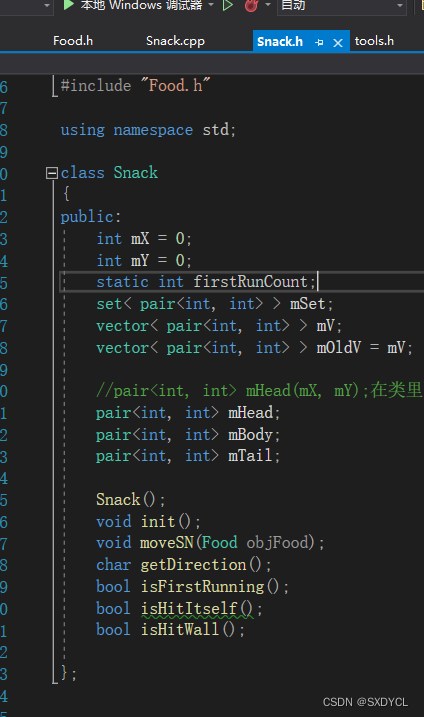
Food category:
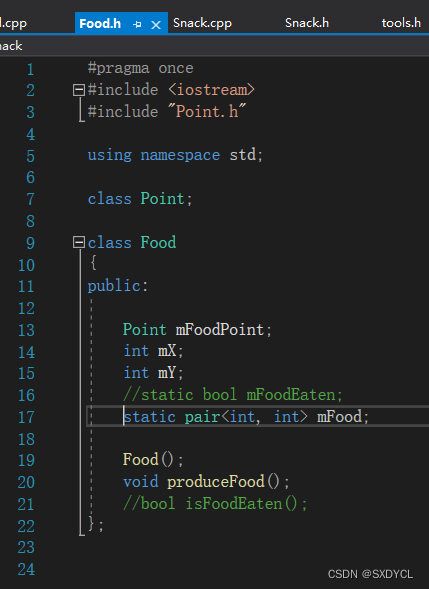
point class:
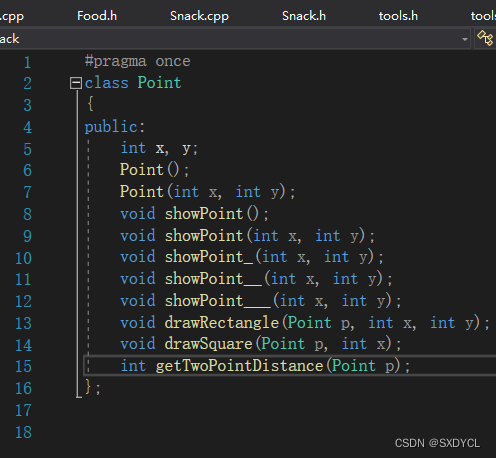
4.2 Initialization
4.2.1 Map
Before introducing how to initialize the map, let's first understand how to output a small square with code in the terminal.
That's right, just print out cout, but I want to print it out at a known coordinate?
Then you need to use cursor positioning:
void gotoxy(int x, int y) //光标定位
{
COORD pos = {
x,y };
SetConsoleCursorPosition(GetStdHandle(STD_OUTPUT_HANDLE), pos);
}
Then just output the squares, use the symbols in the certain dog input method:
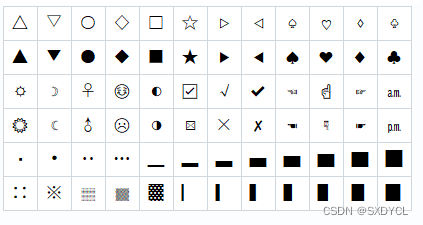
Then you can print the squares at specific coordinates, and then you can continue to print out maps with custom width and height.
需要强调一点,终端的光标的高 = 2 * 宽,所以我们方块的坐标想在终端输出(4,4)的位置,就需要在代码中用(8,4)来代替。
4.2.1 Snakes and food
Then let's continue to understand how to initialize the snake and food. The initialization must be generated with random coordinates, which requires the use of the rand() function, and then an integer in the interval [a,b] can be generated:
randNum = rand() % (b - a + 1) + a;
It's been so long since you can simply randomly spawn a snake head and food on the terminal.
For the whole snake, I use containers vector< pair< int, int > >to store coordinates, and for food, I use pair< int, int >
4.3 The body of the snake becomes longer after eating the food
First, you need to realize the movement logic of the snake: initialize the snake to move to the right, assuming the snake head coordinates (x, y), then add this coordinate (x-1, y) to the tail element of the vector, then delete the head element, and "插尾删头".
这里我们还需要定义一个oldSnack vector来打印空格,来抹去上一次蛇的身体,不然蛇是会一直覆盖,你会发现,蛇尾看起来没有被删除。
Then you can realize that the body of the snake becomes longer after eating food. This logic is by adding food coordinates to the tail element of the vector without deleting the head element, and “只插尾”.
4.4 Snakes cannot move in reverse
That is, if the moving direction of the snake is right, and I accidentally press the A key (left), the snake cannot move back.
A variable oldDirection needs to be defined to record the last moving direction to judge with the currently acquired direction.
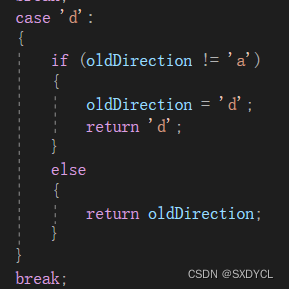
4.5 Refresh after food is eaten
Refresh is very simple, just regenerate one, but how to judge whether the food is eaten, you can check whether the current coordinates of the snake head are equal to the food coordinates,
if not, it means that the snake has not been eaten, then continue to move the snake body, if it is eaten, regenerate food.

It is also here to record the number of food eaten. For myCount in the above screenshot, if you want to make a score, you can multiply it by a food score coefficient.
4.6 Food cannot spawn in snakes
Here you need to regenerate first, and then make a judgment.

Here we encapsulate the judgment whether the food is produced in the snake body, using find() in the STL algorithm:
bool IsFoodEqualSnack(vector<pair<int, int>> vec, pair<int, int> food)
{
if (!vec.empty())
{
auto result = find(begin(vec), end(vec), food);
if ( result != vec.end() )
{
return true;
}
else
{
return false;
}
}
else
{
cout << "vector is empty" << endl;
return false;
}
cout << endl;
}
4.7 Setting Game Difficulty
At present, the movement speed is controlled by Sleep(). The logic is that the length of the current snake minus the length at the time of initialization, and then take the remainder of 2, that is, every time two foods are eaten, the movement speed increases by one gear.
void setSpeed(Snack objSnack)
{
Sleep( 1000 / speedLevel );
if ( (objSnack.mV.size() - 3 != 0))
{
if ( (oldspeed != (objSnack.mV.size() - 3) % 2) &&
((objSnack.mV.size() - 3) % 2 == 0) )
{
speedLevel++;
}
}
oldspeed = (objSnack.mV.size() - 3) % 2;
}
4.8 A snake cannot hit itself
The logic we need here is that repeated elements cannot be included in the snake body vector. How can this be achieved?
It's very simple. Using the unique feature of the set container, we assign the snake body vector to a set container, and judge whether the size of the set is the same as the size of the snake body vector. It's up to me, GameOver.
bool Snack::isHitItself()
{
mSet = {
mV.begin(),mV.end() };
if (mSet.size() != mV.size())//蛇头撞到了蛇身
{
return true;
}
else
{
return false;
}
}
4.8 Snakes cannot hit walls
This is very simple, there is nothing to say.
bool Snack::isHitWall()
{
if ( (mV.end()-1)->first == MAP_X *2 ||
(mV.end() - 1)->first == 0 ||
(mV.end() - 1)->second == MAP_Y ||
(mV.end() - 1)->second == 0)
{
return true;
}
else
{
return false;
}
}
5. Flowchart

6. Code
If the environment is right, it can definitely run normally. 99.99% of the bugs have been solved during the development process, and there are no bugs anymore.
code download
7. Conclusion
The content of this article is completely original and is not allowed to be reproduced! ! !